Instead of screaming into the void of Twitter, I bring you a weekly highlight reel of what it’s like going places in Greater Hartford when one is gloriously car-free. These posts are on a slight time delay because nobody needs to know exactly where I am when I am there.
See that picture? Doesn’t look so exciting, but that’s the bus stop directly next to the stadium, and I guess the word of the week is CONVENIENCE.
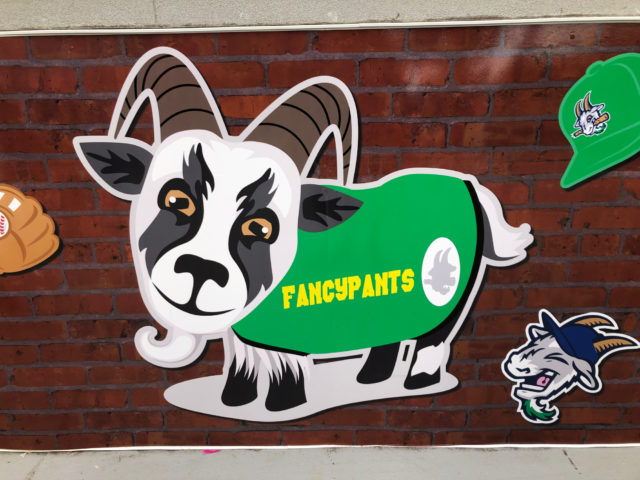
My policy about the stadium is to not step foot in it unless there’s a free event or a free ticket. I love baseball; I don’t love a city adding to its debt in order to build a minor league stadium.
A friend, through his job, has access to a suite, so I put on a ton of sunscreen, my Red Sox hat, and hopped on a (free) bus that stops directly in front of the stadium.
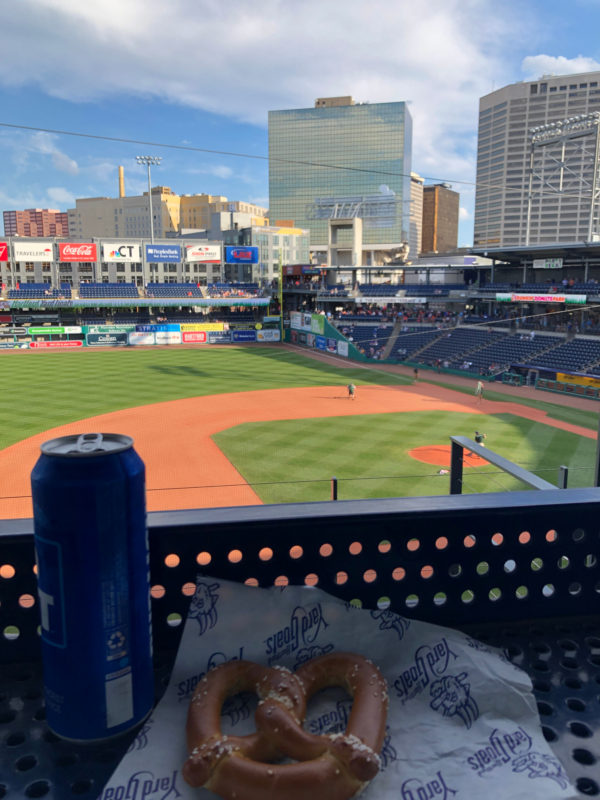
And to get home, a group of us walked back to Frog Hollow from downtown, because it’s social and not so far.
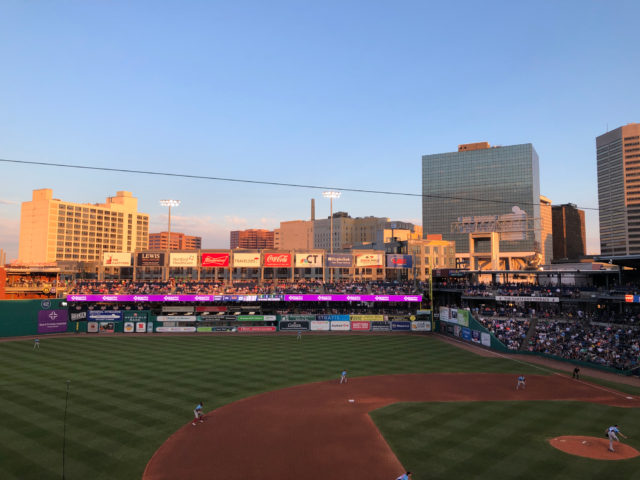
Like many, I spent the long weekend roaming around, searching for places to cool off. More on that in a moment, but I have to interrupt myself with a burst of nature:
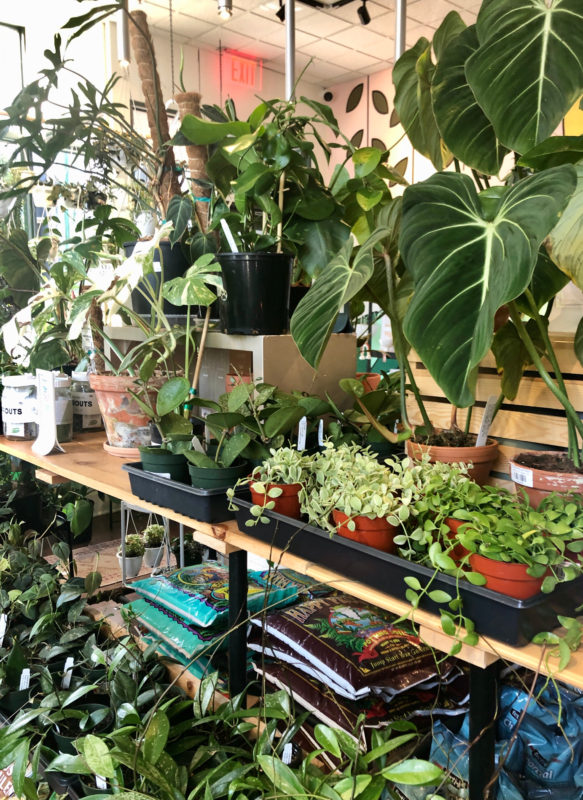
There’s something about supporting the businesses that support us — the ones that don’t set up shop in some car-centric hellscape, but choose locations accessible by public transit.
It’s not that I’ve been going all the way to New Haven to buy plants, but I’ve maybe timed my trips lately so that in between connecting trains, I’ve had time to pop over to visit the two stores (that I know of) within a five-minute walk of State Street Station.
Apparently my answer to climate crisis is to create an indoor jungle for myself.
Bark & Vine (pictured above) is at 49 Orange Street, near Cafe Nine (pictured below). This queer-owned shop is a fucking delight to stroll through, and staff are friendly and helpful. The prices listed online don’t represent everything in stock — there are less expensive items, I assure you.
If you follow Orange Street to Chapel Street and take a left, you’ll see EBM Vintage which carries a small selection of houseplants (front of store, near register) in the warmer months and on their website they even act like a store that understands it’s in a city: “a 5-minute walk to the train station.”
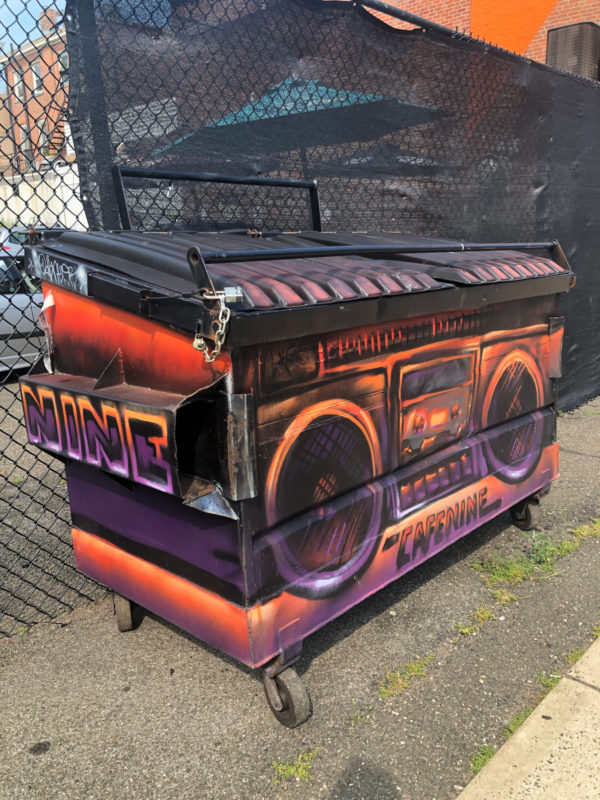
I wish more places thought seriously about development in the area that’s a 10-minute walk from their major transportation hubs. I’m not talking about turning parks or farmland into anything, but sprawling surface parking lots, vacant lots, vacant buildings. . . why?! The towns resisting because it will ruin the “character of the community” (that’s a racist dog whistle) aren’t thinking at all about having a viable future. Maybe that bullshit flies with the most powerful generation and an older set within my own, but are these places that younger people in their 20s and 30s are going to choose to live?
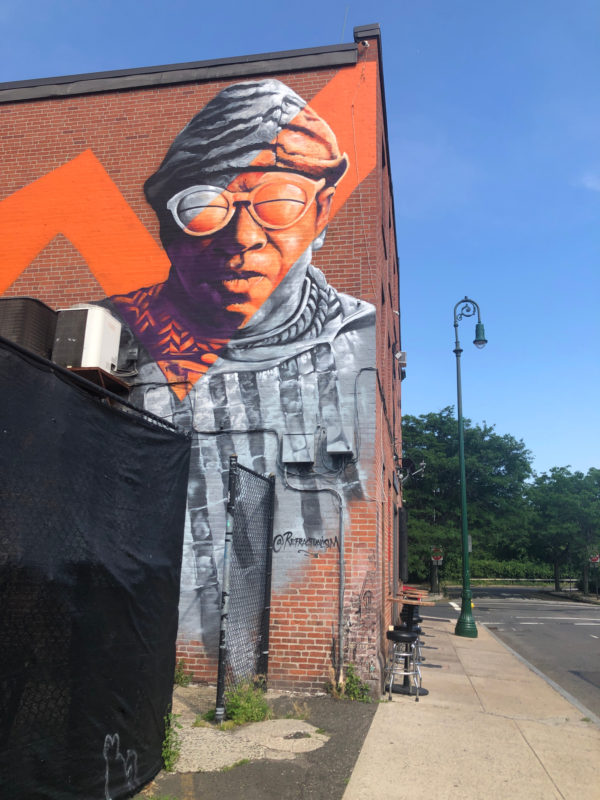
There’s the question:
What kind of future do we want to build?
What kind of future are we actively building?
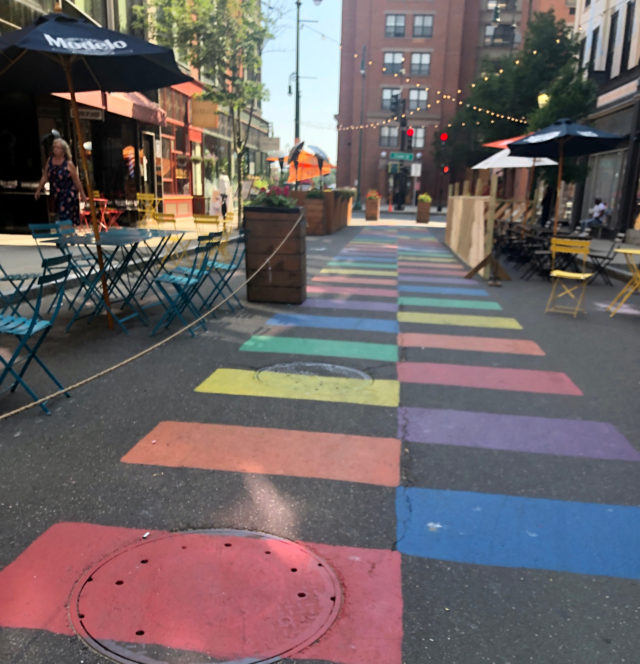
Despite the last minute announcement that the Hartford Line would be basically useless for most of the summer — massively poor communication from CTrail and Amtrak — I am continuing to do the #BeyondHartfordBeyondCars series because I’m one robust bitch, because I’m waving my magic wand, because I’m not one of those people who will only ever use the train.
Maybe next week I’ll get into why a bus subbing in for a train is not actually a solution anyone should accept for more than an emergency situation, but that conversation has to wait until I can do more than yell at the media for lapping up the word of officials and experts without question.
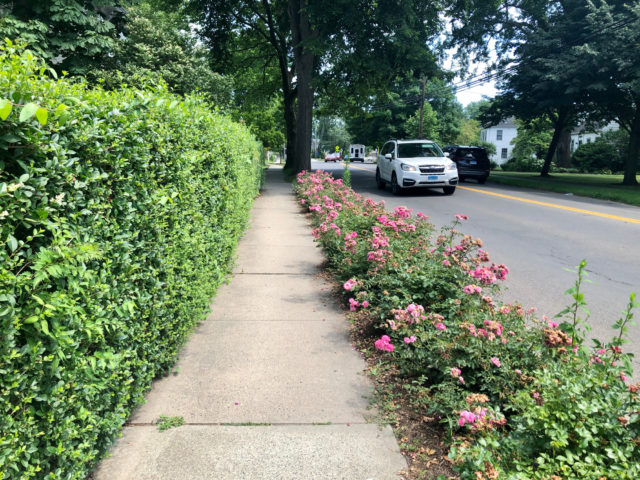
This next stop on the #BeyondHartfordBeyondCars tour will, for now, be referred to as “Shoreline Town X.”
First of all, I will accept a rose-separated sidewalk, thank you.
Later, it became tree-separated. Double thanks. That’s the buffer I’d like between myself and the cars and between myself and the sun.
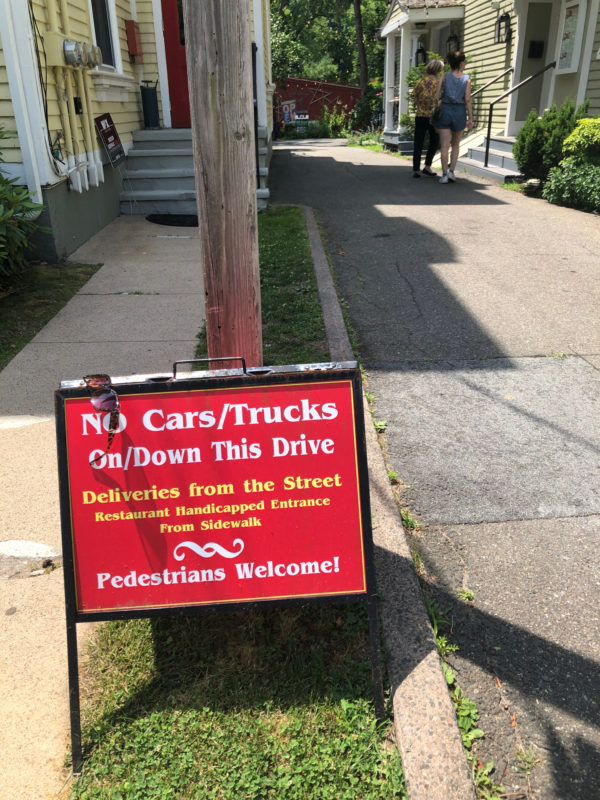
I enjoyed seeing spaces where motor vehicles were off-limits. Others did too, whether they were thinking about it or not. How do I know? Look at behavior in these areas versus, say, a strip mall. In one, people are walking more slowly, sitting around, lollygagging, being social. In the other, people are dashing from store to their car in the parking lot. Design absolutely changes behavior.
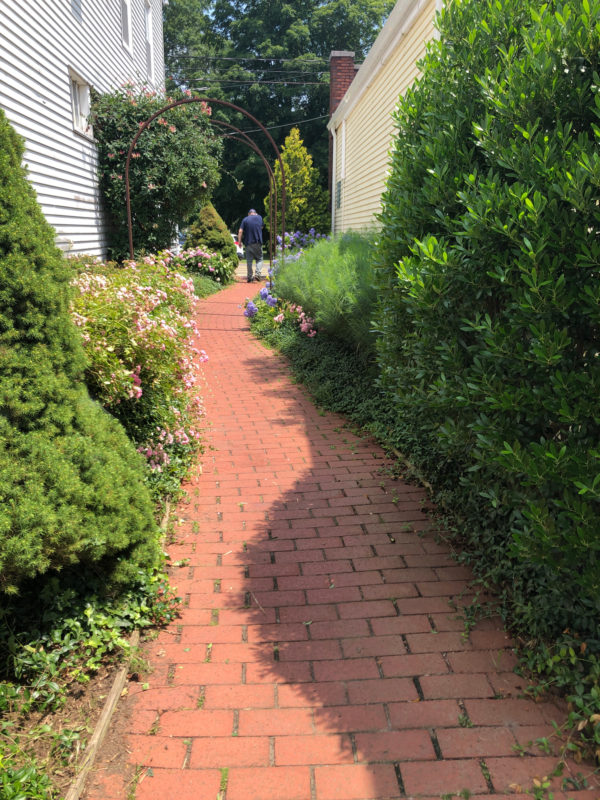
I enjoyed finding certain roads serving as natural bike routes. Designed thoughtfully enough, you don’t necessarily need barrier-protected bike lanes on all streets. . . simply make the road narrow to start with and keep the speed limit low. Aside from one person driving a dump truck way too fast, everyone else was being reasonable behind the wheel.
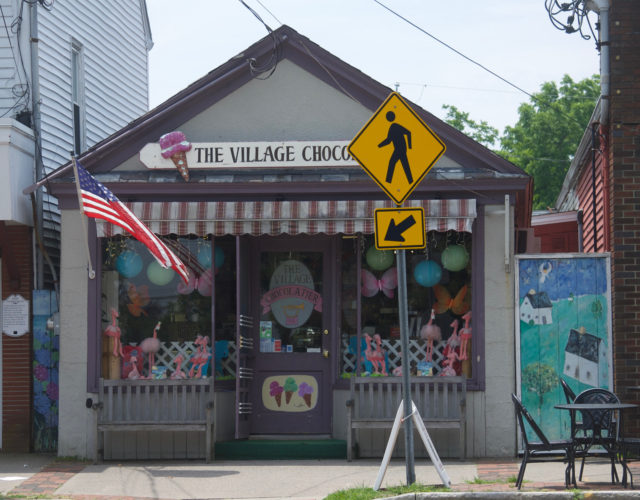
There’s something about being in a space where it feels like your presence outside of a vehicle is both noticed and respected.
That meant in the shopping/dining area, there was a ton of foot traffic, which you can’t tell from these photos because I purposely waited for paths to be clear before snapping the pics. This was on a day where the humidity sucked the joy out and made walking at any speed miserable, yet, people were out and about on foot and bike, regardless — and not just the children and teens.
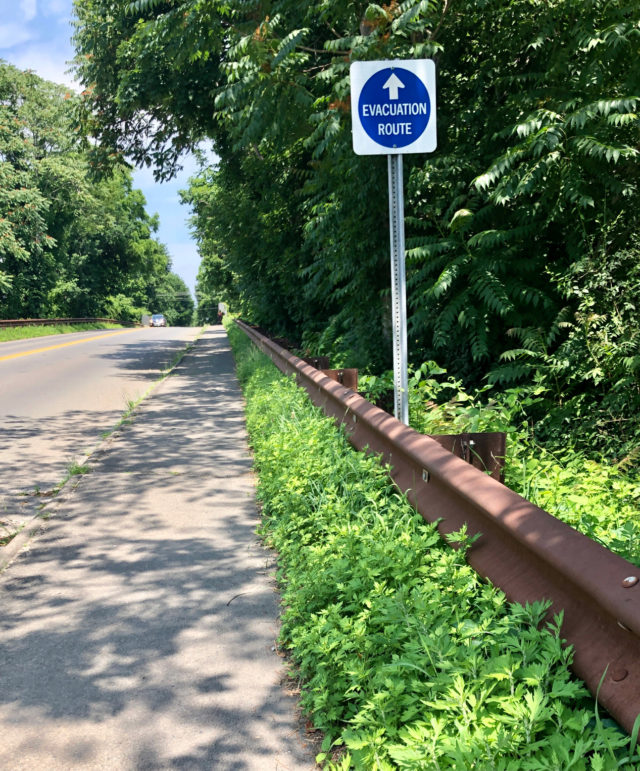
I did not get pics of a few well-done crosswalks. I should have, but didn’t. The crossings were made obvious to drivers. Everyone yielded to me, and I didn’t even need to signal with my middle fingers. Nobody rolled forward as I was crossing.
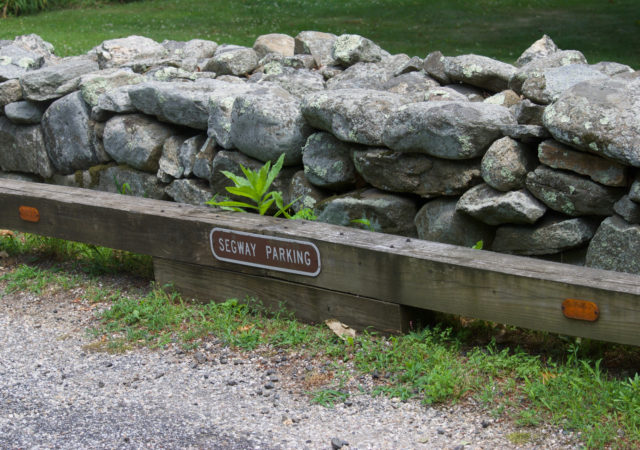
Even a museum got the concept of providing parking for things other than cars, and to label these areas.
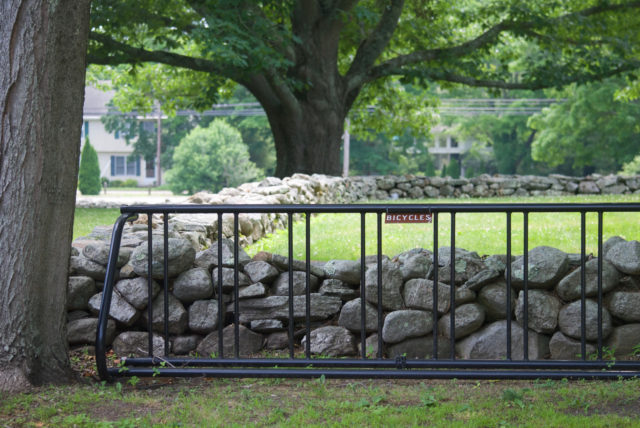
All summer, unless reporters get a clue fast, we will hear the lazy, misleading announcements about various parks being “full” or “at capacity,” and this is a good time to remind people that most of the time when parks “close” they are not really closing. Their parking lots are at capacity. You can still walk or bike in without any trouble.
ParkConnect is one way to go about doing that. Looking at CTtransit’s various system maps to figure out what buses go where is another. By using the Connecticut Coastal Access Guide, you can see that there are far more places to visit than the top two or three state parks that everyone knows about — so even if you can still walk or bike in whenever, you have other, potentially less crowded, options. The secret is to not be needlessly snobby; drop your preconceived notions about what the shore “should” look like and stop asking every single place you visit to be a replica of California or South Carolina. FFS. Our restaurants and stores are cookie cutter enough, we don’t need our nature to also be like that.
What about fees? In my experience, nobody asks questions of you or money from you when arriving on foot or by bike.
Then again, I’m not a child living and biking in Deep River, being verbally and physically attacked by a belligerent racist, so, your mileage may vary.
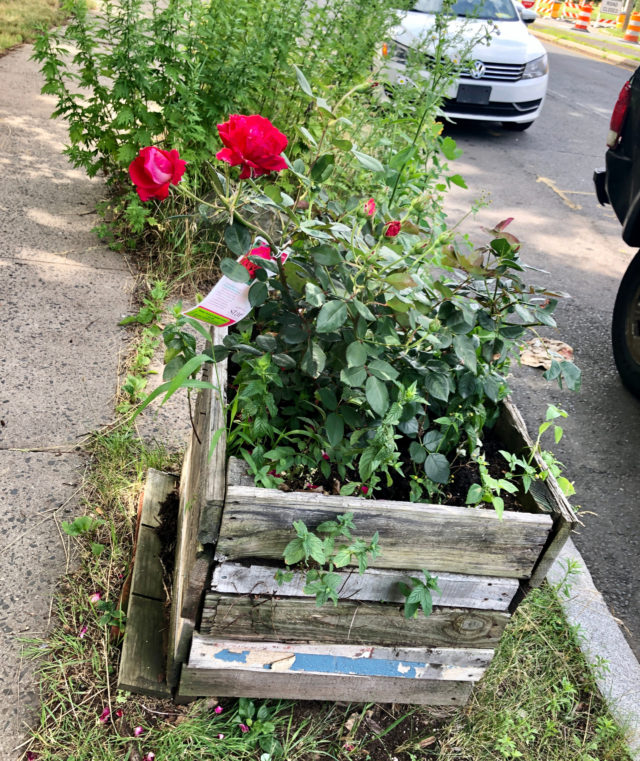
WHAT’S NEXT
With the unacceptable rise in cyclist and pedestrian fatalities on Greater Hartford roadways, we invite concerned residents to organize for more thoughtful, prompt, and effective response from our government officials. We’ll gather in Bushnell Park during Monday Night Jazz on July 11, 2022 at 6 PM. Since the start of this year, 12 pedestrians — including a 15-year old, a 20-year old, and several elderly people — were killed by drivers in Greater Hartford. Each death was preventable. There’s no single magic solution. Let’s share ideas and strategies to make our streets safer for those outside of cars.
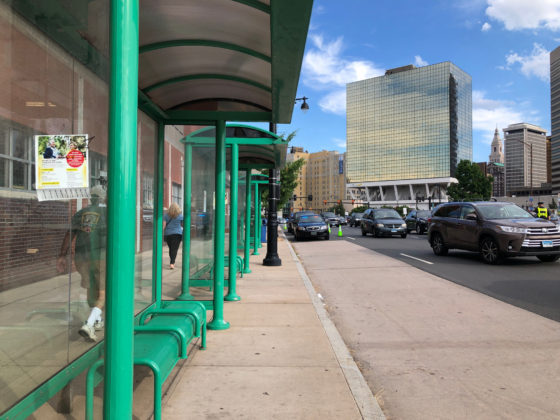
Dan
For whatever it’s worth re. the great HFD line shutdown, CT Rail’s customer service desk responded to my question about bikes-on-the-bustitution-service with confirmation that buses replacing any CT Rail train will have bike racks, but that they do not know whether buses replacing any Amtrak train will.
I have not bothered to ask Amtrak, if only because I stick to the far more reliable CT Rail trains.